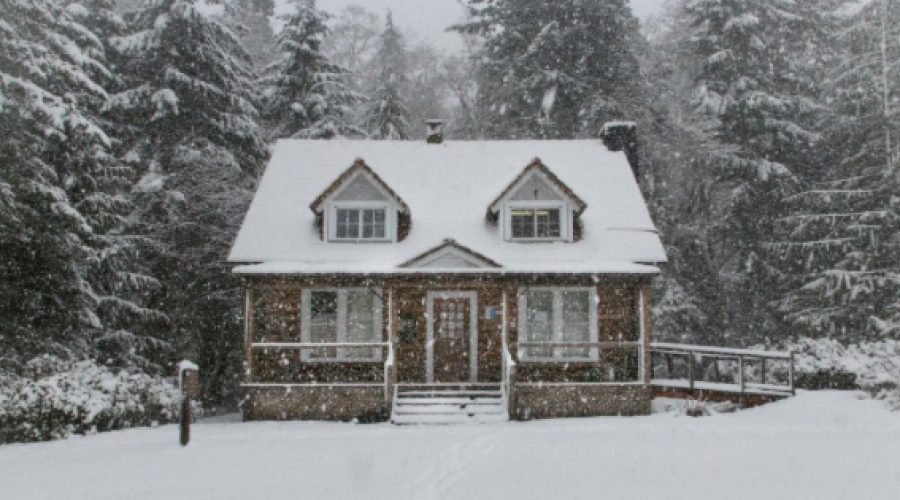Winter is coming, which means freezing temperatures, snow, ice, and wind. Winter is when you need a solid roof, but winter can wreak havoc on your roof. Winter roof damage may result in a call to a roofing company for roof repair or even roof replacement. Here are five ways winter weather can damage your roof:
Ice Dams
Ice dams are regions of ice on your roof that capture snow and water, preventing it from flowing off your roof. Ice dams are created in a number of different ways. The shape of your roof may naturally cause water to pool. When days are warm enough to melt snow but nights are cold enough to form ice, these pools of water can freeze. This ice can build up over time and create an ice dam.
Ice dams can also form when your gutters are clogged. Clogged gutters can cause water to back up. This water freezes and forms an ice dam around the perimeter of your roof.
Ice dams can cause a number of problems:
- Water captured behind ice dams can corrode and flash around chimneys and roof vents, leading to water leaks.
- Accumulated water can get under or between roof shingles. When the water freezes, it can break or loosen shingles.
- The weight of ice and water can damage gutters, shingles, and the roof fascia.
Ice dams can be difficult to spot and if the roof is frozen, it may be dangerous to try to climb around on the roof looking for them. If you suspect an ice dam, you may want to call a roofing company to inspect the roof and determine if ice dams have damaged it.
Water Leaks
While water leaks can occur any time of the year, water leaks in winter can be especially damaging. Ice expands when it freezes, which means that a small leak can turn into a major problem after only a few cold nights.
Water leaks typically occur near corroded flashing, damaged fascias, cracked chimneys, or missing or damaged shingles. Prior to winter, it may be worthwhile to have your roof inspected by a roofing company to identify and repair any potential sources of leaks.
Skylights
Skylights are wonderful for providing natural lighting without consuming any electricity. During winter, however, they can become a magnet for damage.
The weight of snow and ice on the skylight can cause it to crack or deform enough to leak. Moreover, condensation inside the skylight can freeze and cause cracks or leaks. If snow is severe enough that you have to manually clear the snow off your roof, it would not be unusual to forget where the skylight is buried and accidentally step on it or damage it with a snow shovel.
Branches
Aside from weighing down your roof, snow and ice can weigh down tree branches, sending them crashing into your roof. This can structurally damage the roof and may necessitate a roof replacement. According to roofing experts, if you need a new roof, you can often get 20% more life out of your roof if you replace the roof completely rather than building on top of your existing roof.
Even if it appears that a falling branch has not damaged the structure of a roof, it may still be advisable to have to roof inspected for damage. Damage to the gutters, downspouts, flashing, roof vents, chimney, shingles, fascia, soffit, or skylights can lead to ice dams and water leaks.
Wind
Northern Illinois is known for its wind. When high winds strike a roof, the edges, corners, and ridges take the brunt of the force. Specifically, anywhere a shingle has an exposed edge, there is some risk that the wind will cause the shingle to lift, curl, break, or tear away. Water can leak around and under damaged shingles and freezing temperatures can cause further damage to those shingles and to the underlying roof structure. If you suspect that your shingles have been damaged or loosened by wind, a call to a roofing company may prevent a minor repair from turning into a major problem.
Precipitation, wind, and freezing temperatures make winter a very harsh time for your roof. Inspecting the roof for problems before winter and keeping an eye on the roof once the snow flies, can help keep the roof in good condition.

